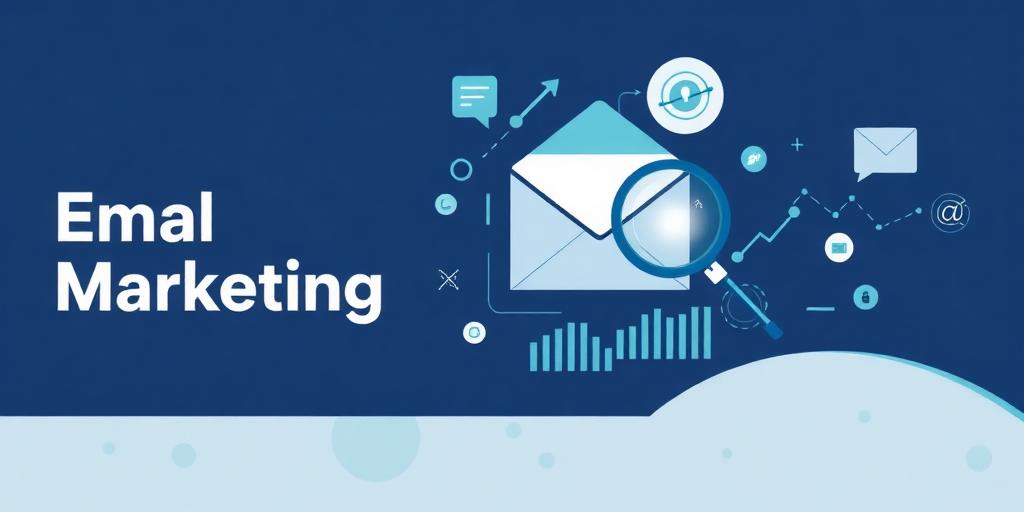Mastering Email Engagement: Authoritative Strategies to Elevate Your Open Rates
In the realm of digital marketing, the email inbox remains a potent battlefield for attention. A high open rate is not merely a vanity metric; it is the fundamental gateway to engagement, conversions, and sustained audience relationships. Without an open, even the most meticulously crafted message remains unseen. This guide presents authoritative, data-driven strategies designed to significantly improve email open rates and unlock the full potential of your email campaigns.
The Foundation: Crafting Irresistible Subject Lines
The subject line is your email's first, and often only, impression. It must compel action within a glance. Mastering this critical element is paramount for increasing email open rates.
- Clarity and Conciseness: Aim for subject lines between 40-50 characters. Be direct and convey immediate value. Ambiguity can lead to deletion.
- Intrigue and Urgency (Judiciously Applied): Pique curiosity without resorting to clickbait. Phrases like "[Limited Time]" or "[Action Required]" can be effective, but overuse diminishes their impact.
- Strategic Use of Emojis: Emojis can enhance visibility and convey tone, but their use must align with your brand voice and audience expectations. Test their effectiveness rigorously.
- Personalization: Incorporating the recipient's name or specific details relevant to their known preferences can dramatically boost engagement. This aligns with effective email subject line best practices.
- A/B Testing: Never assume. Continuously test different subject line approaches to understand what resonates best with your specific audience segments.
Building Trust: Your Sender Name and Reputation
Beyond the subject line, the 'From' name is a powerful determinant of whether an email is opened. Trust and recognition are key.
- Consistent, Recognizable Sender Name: Use a familiar sender name, ideally your brand name or a recognized individual from your organization. Consistency builds trust.
- Email Authentication: Implement SPF, DKIM, and DMARC to authenticate your emails, preventing spoofing and improving deliverability. This fortifies your email sender reputation and signals legitimacy to email service providers (ESPs).
- Maintaining a Positive Sender Score: A healthy sender score, influenced by low bounce rates, high engagement, and minimal spam complaints, is vital. ESPs scrutinize this metric when deciding whether to place your email in the inbox or the spam folder.
Precision Targeting: The Power of Segmentation
One-size-fits-all email campaigns are inherently inefficient. To genuinely improve email open rates, relevance is non-negotiable. Effective email list segmentation strategies are the answer.
- Why Segment?: Grouping subscribers based on shared characteristics ensures that the content they receive is highly relevant to their interests, needs, or stage in the customer journey.
- Segmentation Criteria: Utilize data points such as demographics, past purchase history, website behavior, engagement levels, geographic location, and subscription preferences.
- Tailoring Content: Develop distinct content strategies for each segment. A segmented list ensures that an email about a new product line only goes to those who have previously shown interest in similar products, for example.
Beyond the Subject Line: Optimizing Preheader Text
The preheader text, often displayed immediately after the subject line in the inbox, is a valuable, underutilized asset for increasing open rates.
- Complementing the Subject Line: Use the preheader to expand on the subject line, providing additional context or a secondary hook.
- Adding Value and Context: Offer a glimpse into the email's content or highlight a key benefit that couldn't fit in the subject line.
- Subtle Call to Action: A well-crafted preheader can function as a soft call to action, encouraging the open by hinting at what awaits inside.
Timing Is Everything: Sending for Optimal Impact
Even with a compelling subject line and relevant content, an email sent at the wrong time can be overlooked. Strategic timing helps you to increase email open rates.
- Audience-Specific Timing: Analyze your own audience data to identify peak engagement times. These can vary significantly by industry, demographic, and geographic location.
- Testing Different Send Times: Experiment with various days of the week and times of day. Sundays, Tuesdays, and Thursdays often show strong performance, but this is not universal.
- Frequency Management: Avoid overwhelming your subscribers. Too many emails can lead to fatigue, unsubscribes, and a decline in open rates. Find the sweet spot that keeps your audience engaged without feeling harassed.
Nurturing a Healthy List: Cleanliness and Deliverability
A clean, engaged email list is the bedrock of successful email marketing. Neglecting list hygiene actively harms your open rates and sender reputation.
- Regular List Cleaning: Implement a strategy to identify and remove inactive subscribers (those who haven't opened or clicked in a long time) or invalid email addresses. This reduces bounce rates and signals to ESPs that you are a responsible sender.
- Suppression Lists: Maintain a suppression list for unsubscribed or hard-bounced addresses to ensure you never email them again.
- Consent-Based Acquisition: Always prioritize obtaining explicit consent from subscribers. A voluntarily acquired list is inherently more engaged and less prone to marking your emails as spam, which significantly helps how to increase email open rates.
Conclusion
Elevating your email open rates demands a multi-faceted, strategic approach. By meticulously optimizing your subject lines and preheader text, establishing a strong sender reputation, leveraging precision segmentation, and diligently maintaining list hygiene, you can transform your email campaigns into powerful drivers of engagement and conversion. Continuous testing and data analysis are not optional; they are essential for sustained success in the dynamic landscape of email marketing.









